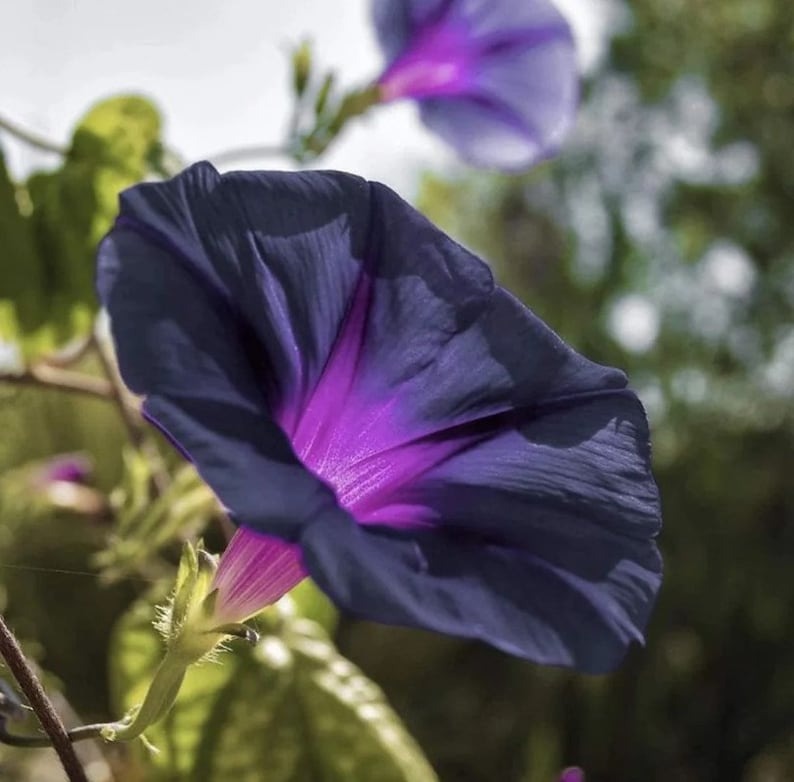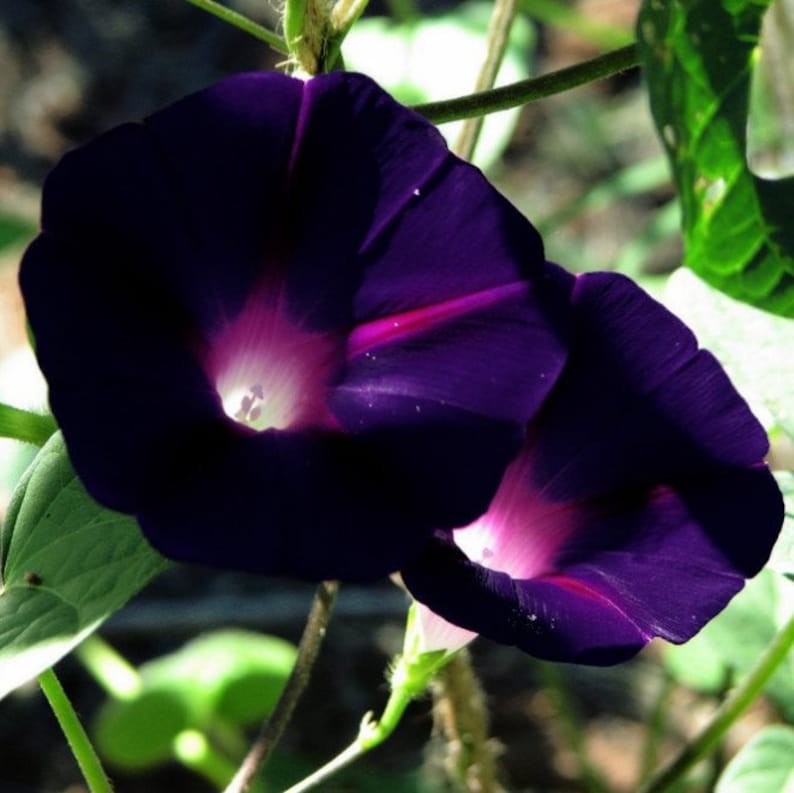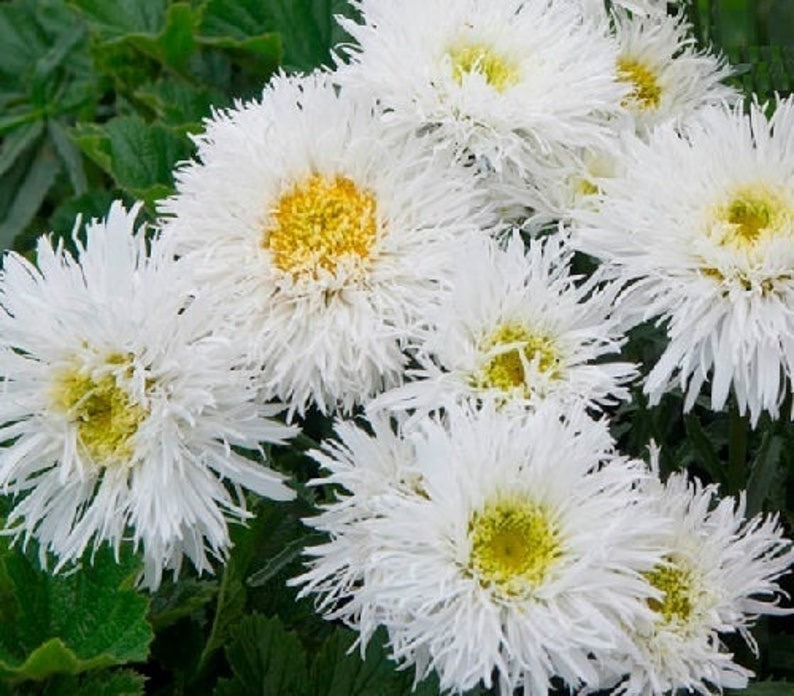
Welcome to the Black Morning Glory Vine Guide
Black Morning Glory
The Black Morning Glory Vine, also known as Ipomoea purpurea ‘Black Knight,’ is a cultivar of morning glory that features deep, velvety purple or nearly black flowers. It belongs to the family Convolvulaceae and is native to tropical regions of the Americas. Here are some key details about the Black Morning Glory Vine:
Appearance: The Black Morning Glory Vine is a vigorous climbing plant that can reach heights of 6 to 10 feet (1.8 to 3 meters). It has heart-shaped leaves that are typically green, although some varieties may have a slightly purplish hue. The flowers are the highlight of this vine, with large trumpet-shaped blooms that are almost black, exhibiting shades of deep purple. The flowers usually measure around 3 to 4 inches (7.5 to 10 cm) in diameter.
Growing Conditions: The Black Morning Glory Vine is typically grown as an annual plant, although it may behave as a perennial in frost-free regions. It thrives in full sun and requires warm temperatures to grow well. The plant prefers well-draining soil with moderate fertility. It can tolerate a range of soil types but performs best in moist, loamy soil. Adequate watering is necessary, especially during dry periods.
Planting and Care: To grow the Black Morning Glory Vine, sow the seeds directly into the garden soil after the last frost date in your region. The seeds should be placed about half an inch (1.3 cm) deep and spaced approximately 6 to 12 inches (15 to 30 cm) apart. Keep the soil consistently moist until the seeds germinate, which usually takes around 7 to 14 days.
Once the plants are established, provide support for them to climb, such as a trellis, fence, or arbor. Regularly check for any pests or diseases and take appropriate measures if necessary. Deadheading (removing spent flowers) can encourage continuous blooming.
Cautions: It’s important to note that morning glories, including the Black Morning Glory Vine, are considered invasive in some regions. They have a tendency to self-seed and can spread rapidly, potentially becoming a nuisance in certain ecosystems. Make sure to check with local authorities or gardening experts before planting them in your area.
In conclusion, the Black Morning Glory Vine is a strikingly beautiful climbing plant with dark purple to black flowers. It requires full sun, well-drained soil, and consistent moisture to thrive. However, be mindful of its potential invasiveness and follow guidelines provided by local authorities regarding its cultivation.
Care Guide
- Choose the right time for planting: Black Morning Glory Vines are typically grown as annuals. Wait until the danger of frost has passed and the soil has warmed up before planting. This is usually in the springtime.
- Select a suitable location: Black Morning Glory Vines thrive in full sun, so choose a spot in your garden that receives at least 6 to 8 hours of direct sunlight each day. Ensure the soil is well-drained and has moderate fertility.
- Prepare the soil: Before planting, prepare the soil by loosening it with a garden fork or tiller. Remove any weeds, rocks, or debris from the area. If your soil is heavy or clay-like, consider adding organic matter, such as compost, to improve drainage.
- Sow the seeds: Black Morning Glory Vine seeds can be directly sown into the garden soil. Make small holes in the soil, about half an inch (1.3 cm) deep, spaced approximately 6 to 12 inches (15 to 30 cm) apart. Drop one or two seeds into each hole.
- Cover and water: Gently cover the seeds with soil and press it down lightly. Water the area thoroughly, ensuring the soil is evenly moist. Avoid overwatering, as excessive moisture can cause rotting. Maintain consistent moisture until the seeds germinate.
- Provide support: Black Morning Glory Vines are climbers, so they require support to grow and twine around. Install a trellis, fence, or other support structure near the planting area. As the vine grows, gently guide and train the tendrils onto the support to encourage upward growth.
- Care for the plants: Regularly check the soil moisture and water as needed, aiming to keep the soil consistently moist but not waterlogged. Once the plants have established, they are generally drought-tolerant but will benefit from supplemental watering during dry spells.
- Monitor pests and diseases: Keep an eye out for common garden pests such as aphids, slugs, and snails. If necessary, take appropriate measures to control them. Inspect the plants regularly for signs of diseases like powdery mildew or leaf spot and address any issues promptly.
- Deadhead spent flowers: To encourage continuous blooming, remove faded or spent flowers by pinching or cutting them off. This practice prevents the plant from expending energy on seed production and redirects its resources into producing more blooms.
- Harvest seeds (optional): If you wish to collect seeds for future plantings, allow some flowers to fully mature and develop seed pods. Harvest the pods when they turn brown and dry, then remove the seeds and store them in a cool, dry place until you’re ready to plant them.





